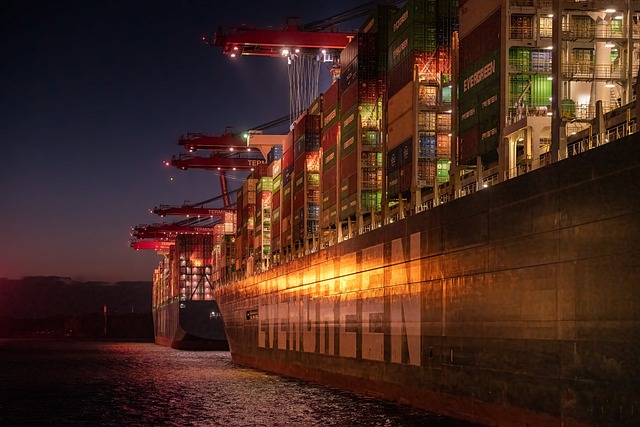Interpreting Dealer Quotes for Recycled Material Rates Worldwide
Dealer quotes for recycled materials reflect a blend of local demand, global commodity cycles, and the composition of scrap lots. This piece outlines how dealers derive numbers, what details to check in quotations for ferrous and nonferrous materials, and how analytics, logistics, and recovery expectations affect negotiated rates across different markets.

Dealer quotations for recycled materials combine technical assessment, market context, and logistical factors to produce a per-tonne or per-unit rate. Understanding those components helps businesses, collectors, and recyclers interpret offers and compare multiple quotations across regions. A careful reading of a quote requires attention to material grade, moisture or contamination penalties, transportation costs, and whether the dealer references spot market indices or longer-term contracts. Timing—such as proximity to inventory rebuilds, seasonal demand, or smelter maintenance—can shift numbers, while the availability of local services and processing capacity often determines whether a quoted rate is practically achievable in your area.
How dealers determine metals valuation
Dealers classify materials into ferrous (iron, steel) and nonferrous (copper, aluminum, brass) categories and assess grade and cleanliness. Valuation begins with a base price tied to regional scrap yard averages or commodity benchmarks, then adjustments account for contamination, mixed loads, and expected recovery rates. Processing requirements—sorting, cutting, deslagging—are costed into offers, as are laboratory tests for high-value metals. Dealers also factor in downstream demand from mills or smelters and local capacity; where processing is constrained, even high base prices may be reduced to reflect handling bottlenecks and disposal costs.
What market rates and commodities trends signal
Global commodities markets influence scrap pricing: rising primary metal prices usually lift recycled material rates because mills prefer cheaper secondary feedstock. Dealers monitor benchmark exchanges, import/export flows, and macro drivers such as construction activity or manufacturing output. Freight costs and tariffs can alter comparative value between domestic and export markets; for example, a high export demand may push local prices up, while shipping disruptions can depress exportable volumes. Short-term volatility is common, but structural trends—electrification, lightweighting, or changes in scrap regulation—have lasting impacts on valuation.
Reading dealer quotations for ferrous and nonferrous
A useful quotation specifies material type, unit (per tonne, per kilogram), acceptance criteria, and any deductions for contamination or separation. Ferrous materials typically present lower per-unit prices but higher throughput; nonferrous metals like copper or aluminum command higher unit rates and stricter grading. Pay attention to whether the quote is for delivered, free-on-truck, or ex-works terms and whether sampling fees or moisture adjustments apply. Explicit quality descriptors (e.g., insulated copper wire, clean aluminum cans, mixed light iron) allow apples-to-apples comparisons across multiple dealer offers.
Role of analytics and recovery in pricing
Dealers increasingly rely on analytics and historical recovery metrics to refine offers. Yard operators track composition, weight history, and seasonal patterns to estimate expected metal recovery after processing. Higher predicted recovery percentages support stronger quotes because they lower the operator’s resale risk. Analytical tools that model contamination impact, downstream acceptance rates, and market timing can reduce surprises, but on-site inspection and sample processing remain necessary. Sellers that provide accurate sorting and documentation often achieve better net returns because dealers face lower handling uncertainty.
| Product/Service | Provider | Cost Estimation |
|---|---|---|
| Mixed ferrous scrap (per tonne) | European Metal Recycling (EMR) | £80–£220 per tonne (est.) |
| Shredded ferrous scrap (per tonne) | Sims Metal Management | US$120–$300 per tonne (est.) |
| Copper cathode / high-grade copper (per tonne) | Regional brokers / smelters | US$6,000–$9,000 per tonne (est.) |
| Aluminum scrap (per tonne) | Sims Metal Management / EMR | US$600–$1,800 per tonne (est.) |
Prices, rates, or cost estimates mentioned in this article are based on the latest available information but may change over time. Independent research is advised before making financial decisions.
Real-world cost and pricing insight: Market quotations are often ranges rather than fixed prices. A quoted high price for copper in one market can be offset by transport and export compliance costs; conversely, a modest local copper quote might yield better net revenue if nearby smelter capacity reduces handling expenses. Small-lot sellers typically encounter higher per-unit processing overheads and may see lower net rates. When seeking multiple quotations, ask dealers to itemize deductions, clarify whether quoted values are gross or net, and confirm the measurement units used.
Comparison and practical steps: Normalize quotes to a common unit (e.g., per tonne or per kilogram) and include estimated transport and handling when comparing offers. Account for local services in your area—collection, sorting, temporary storage—and regulatory costs if export is considered. Dealers with transparent analytics and consistent recovery records tend to provide more reliable pricing; request past recovery performance or references if available. Keep in mind that spot quotations can change rapidly in response to market news, so confirm validity windows and weight acceptance procedures.
A concluding perspective: Interpreting dealer quotes requires scrutiny of material specification, grading criteria, and the logistical and market context behind a number. By standardizing units, checking for hidden deductions, and benchmarking against known providers, sellers and buyers can better understand where value lies in a quotation. Combining clear documentation of materials with awareness of commodities trends and local processing capacity helps stakeholders negotiate rates that reflect both technical recovery potential and prevailing market dynamics.






